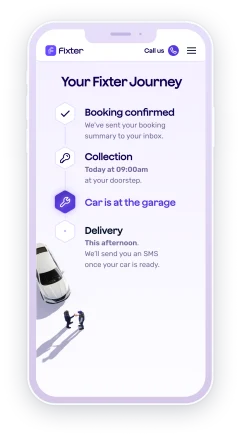Figuring out why your car is burning more fuel than usual can boil down to a number of reasons. It could be a mechanical issue or down to your driving style and bad driving habits. Getting the best fuel economy boils down to two key factors: that your car is performing at its best, and you are too.
To achieve optimum fuel economy from your vehicle, you’ll have to pinpoint the problem. You may need a little more air in your tyres, new filters, a basic repair, or you might benefit from driving at lower engine revolutions and making wiser gear changes.

Need further assistance?

Why does my brake pedal feel spongy?
Your brakes are supposed to feel firm and solid under braking. Given your brakes are paramount to safety, it’s a must that they operate exactly as they should. Problems with air in the brake lines and contaminated fluid are the most likely culprits, but a few other issues can result in the same problem.
If your brakes feel soft, spongy, or the pedal reaches far too close to the floor when pressed, then there’s something amiss and needs sorting ASAP.
What are the common causes of spongy brake pedals?
Air in the brake lines
Risk level – Medium
What to do – Have the brakes flushed or bled to remove the unwanted air.
Having pockets of air in the brake lines is the most common cause of spongy brakes. Bleeding the brake lines is the first step to flushing out the air that you don’t need, leaving you with all that you do!
Damaged or leaking brake lines and callipers
Risk level – High
What to do – Brake lines corrode and rust over time, leaving them vulnerable to leaks.
Even if they’re only minute holes in the brake lines or callipers, they can easily lead to a loss of pressure and spongy braking. Hydraulic pressure is vital to your brake efficiency, so any fluid leaks or air ingress is bad news.
A worn master cylinder
Risk level – High
What to do – Repair or replace the faulty component.
At the heart of the braking system is its master cylinder. This key component contains the brake fluid, generates hydraulic pressure, and delivers the front and rear brake cylinders with everything they need to do their job. Unfortunately, they can develop leaks both externally and internally—neither of which is good news.
Poor brake system or disk and pad adjustment
Risk level – Medium
What to do – Have the brakes reset and balanced correctly.
A poorly set up brake can create all kinds of issues. For example, they may wear quicker, catch in the wrong places, fail to connect as they should, and possibly lead to those spongy brakes we’re trying to diagnose.
Old brake fluid
Risk level – Medium
What to do – Flush and replace the brake fluid.
Brake fluid ages over time, becoming less efficient as it’s infiltrated with moisture and other contaminants. There are several areas that could allow air or moisture into the system, all weakening the strength of your brake fluid. So when it comes to a spongy brake pedal, the condition of your brake fluid is a sensible place to start.

Need further assistance?

Is it safe to drive with a spongy brake pedal?
No. Some spongy brake issues might not be too dangerous in the short term, but it’s just not worth the risk when your brakes are such an important part of your driving safety. A leak can quickly turn into a blowout—and with no brakes, you could end up in a very serious accident.
If your brake pedal is spongy or soft, get it fixed ASAP—to keep you, your family, and all of your passengers safe.
How can I diagnose my brake pedal problems?
When you push down on your brake pedal, you should feel a solid, firm response as the brakes are applied. Any give, spongy, or mushy feeling is a sign that there’s something wrong. By pumping the brake, you’ll often find it becomes solid again. If so, it’s likely it’ll slowly give as the air in the system finds its way back into your braking performance.
If after they firm up, you keep your foot on the pedal, and the brakes slowly start to sag, then it’s quite possible that you’ve got a leak.
The best way to diagnose brake issues is to consult a professional mechanic. Leaking brakes are dangerous, so seek assistance immediately.
How do you firm up a spongy brake pedal?
Depending on exactly why they’re so spongy, getting your brakes back to the firm and solid feel you need (and is safe!) can mean:
Bleeding or flushing the brake lines of any air
Replacing old brake fluid that has lost its efficiency with new and prime performing liquid
Having the brakes set up correctly
Replacing damaged brake pads, discs, callipers, or other faulty components
What happens when my spongy brake pedal feels hard after pressing?
If you press your brake pedal a few times and it gets firmer with each press, that’s usually a strong indicator that air has managed to infiltrate your system somewhere in the lines. It’s also a sign that your lines need bleeding to get whatever air is in there—out!
How much does it cost to fix a spongy brake pedal?
It depends on the problem. It could be a cheap and easy fix where a simple flushing will rectify the issue, or it could be costly if it requires a new set of brake lines, replacement callipers and other components.
If you aren’t sure where the problem with your brakes lies, then one of our trusted mechanics will. Book in with Fixter, and we’ll carry out a complete examination of your brake system to uncover the issue. Once we know what the problem is, we’ll run you through all of your options and repair costs.

Need further assistance?






